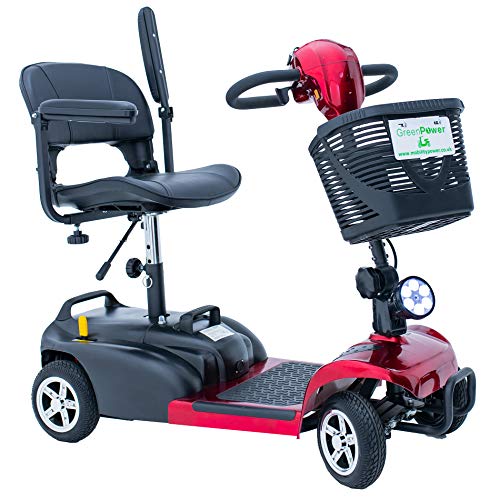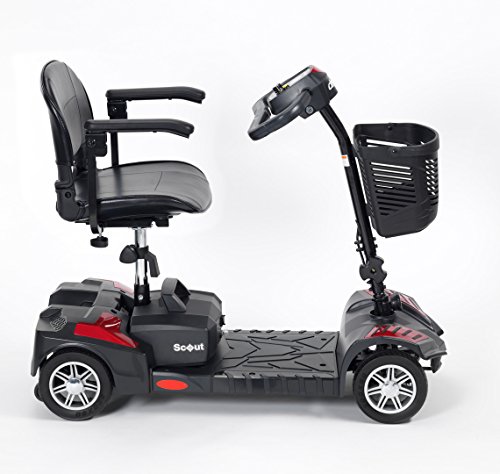What You Can Do To Get More Out Of Your Electric Assistive Technology
페이지 정보
작성자 Rosaline 댓글 0건 조회 241회 작성일 24-11-26 21:40본문
 electric mobility Assistive Technology
electric mobility Assistive TechnologyMore than one billion people require an assistive device, and the number is expected to increase by 2030. These devices can be purchased in stores or modified (like adding tennis balls to a walking aid) or even customised.
Some examples of assistive technology include pencil grips, ergonomic kitchen tools (such as OXO good grips) and keyboards that are specialized. Other advanced devices could be considered, including screen magnifiers.
Functional electrical stimulation
Functional electrical stimulation (FES) applies small Electric Mobility scooter portable charges to muscles that have become disabled or weakened due to injury, such as from stroke or multiple sclerosis. The electrical impulses allow the muscle to move normally. This treatment can be used to enhance movement, like a walking or grasping. It can also help improve bladder, bowel, and reduce the chance of pressure sores.
Electrical stimulation can elicit responses in excitable cells, such as neurons, and it has been used for a long time to treat various conditions. Examples include cochlear implant to restore hearing, phrenic pacemakers to aid breathing, and systems that help people void the bladder. It also helps reduce tremors caused due to Parkinson's disease. Electrical stimulation can be provided via electrodes that are inserted in the body or positioned on the skin's surface without cutting the skin. These electrodes are referred to as percutaneous or noninvasive electrodes.
The intensity of the stimulation can be adjusted to produce different results. For instance, the amplitude of the stimulus can influence the type of nerve fibers recruited, with larger fibers closer to the electrode being targeted first. The duration of the stimulus is also an crucial factor. This can affect the rate of fatigue, by altering the duration that the muscle is stimulated.
FES is not for all. It can be extremely efficient in helping someone suffering from an injury to their spine recover their functional movements. It isn't appropriate for those who suffer from epilepsy that isn't controlled or a cancerous lesion on the the skin to be stimulated, or are oversensitive to the sensation of stimulation. The electrodes aren't recommended for those suffering from skin conditions, since they could cause irritation or pressure injuries.
Power chairs
Power chairs are a form of motorized wheelchair that utilizes an lightest electric mobility scooter battery and motor to aid mobility. They can be controlled by an electronic joystick or other control system. They offer more independence for those who are unable to walk. These devices enable users to travel further distances without relying on others. These devices can also be adapted to meet the requirements of particular users.
There are many different types of power chair, such as small, portable electric mobility scooter, indoor/outdoor, and mid-sized. Portable power chairs are lightweight and can be folded down to fit in small spaces. They are ideal for home use, or for shorter distances. Power chairs that are mid-sized offer a balance between durability and portability, while outdoor and indoor power chairs are made to be used outdoors, but can be adjusted to fit indoor conditions. Indoor/outdoor chairs may have grippy tires to assist with maneuvers over kerbs and they might also come with the ability to climb kerbs.
Assistive technology is a vital device for people with physical impairments. The technology can be anything from voice recognition software that is available in retail stores to specially designed seating that improves the user's comfort and independence. High-tech assistive technologies are typically more expensive, but they provide advanced features and customizable options that are perfect for those who have a wide range of needs.
To find the right solution to meet your needs, it is best to seek out a professional assessment from a doctor or physical therapist. They can recommend the right equipment for you, assist you choose the right size and show how to use it. They can also assist you in selecting the right accessories and integrate the device into your daily activities.
Railings
Railings are often called handrails. They are a diagonal line that runs through ramps or stairs. They provide a solid grasping point for those who are navigating the incline. The majority of building codes have requirements regarding the height and spacing for handrails to prevent accidents. Handrails are available in a variety and materials. Handrails that are functional and meet ADA regulations feature an opening for fingers on one or both sides. They must also be strong enough to withstand 200 pounds of force.
Handrails can also provide tactile guidance to people with visual impairments to assist them in navigating stairs. Running their hand across the railings allows users to feel the number of steps, curves or landings. Handrails can be used to steer people away from danger in emergencies.
Electronic pillboxes
The electronic pillbox is a sophisticated device that is designed to assist seniors remember their medication. The electronic pillbox utilizes audio and visual reminders, as well as triple alarms, to ensure seniors take their medications at the appropriate time. This technology can help reduce medication errors that are the leading cause of death among seniors. It also helps prevent overdoses, which could be fatal.
The device consists of a container for medication with compartments for daily use and weekday times and a sensor powered by batteries with a mobile data connection worldwide as well as LEDs and speakers to give audio and visual notifications when the pills are due. This device is designed for patients who frequently take multiple medications or vitamin supplements and caregivers in hospitals and retirement homes.
In the simplest version the sensors for the pillbox are integrated inside the lid. They monitor the status of the subcompartment lids. The sensors are activated whenever the lid is opened by the user, and a signal is transmitted to the microcontroller. The signal is timestamped and stored in the memory cache that is circular to the microcontroller 18LF252.
The system is designed to be easily reprogrammed using an external Arduino board, which controls all the various components. The Arduino board is responsible for wireless notifications to caregivers and also letting the senior know when a pill needs to be taken. The light and acoustic signals will remain on for a short period of time, then it will bleep every 10 seconds until the senior interacts with the device. The pillbox will then start dispensing the pill and the internal speaker and LEDs will be turned off.

댓글목록
등록된 댓글이 없습니다.

